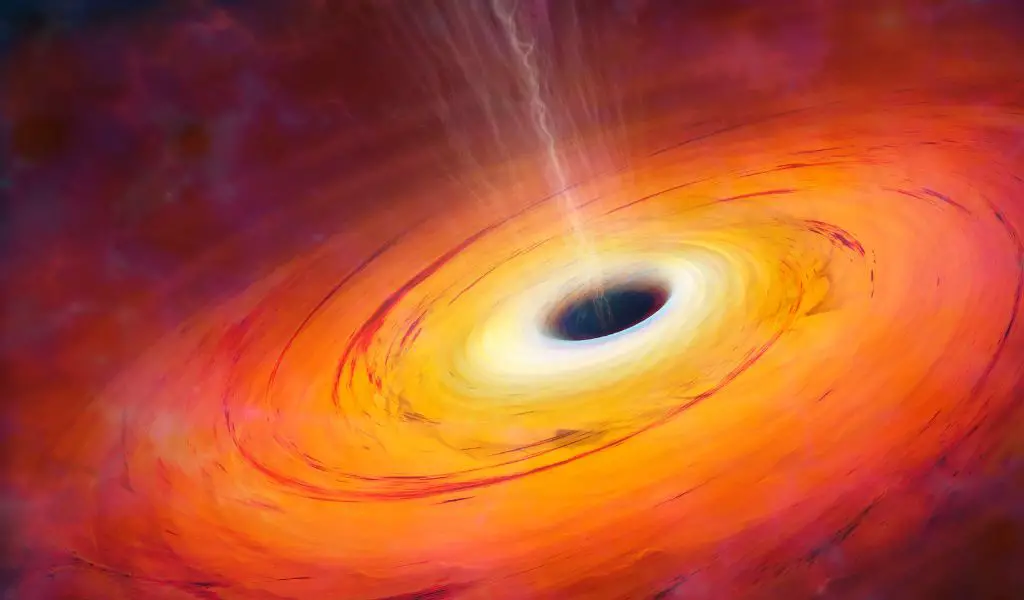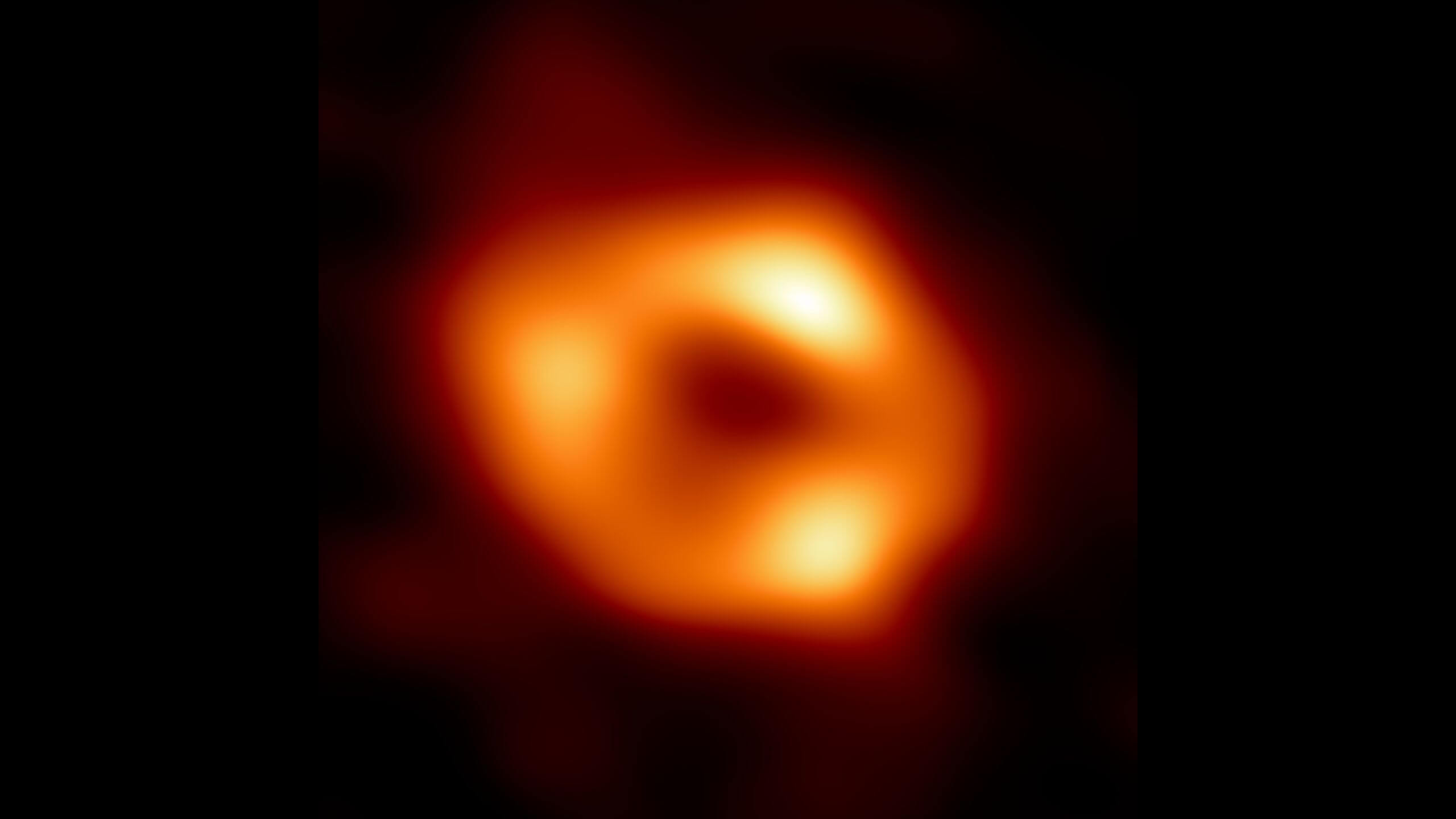The closest Supermassive black hole to Earth is the Sagittarius A* black hole. It is located right in the centre of our own Milky Way, spinning at a rate less than 10% of the speed of light. Sagittarius A* is about 27000 light-years away from Earth lying in the constellation Sagittarius.
Sgr A* was discovered by astronomer Robert Brown and Bruce Balick. For which they were also awarded the Nobel Prize for Physics in 2020. They discovered this massive black hole on February 13-15, 1974.
Surprisingly Sgr A* is just a compact component of Sagittarius A which basically consists of countless overlapping sub-components. In 1982, Robert Brown gave this name (Sagittarius A* or Sgr A*) to this small chunk with an asterisk.
The asterisk shows exciting states of a black hole or a radio source. Hence Robert indicated Sgr A* by an asterisk to show that this supermassive black hole is exciting. However, “A” shows the luminosity of the black hole, meaning Sgr A* is extremely bright.

Sgr A* is covered under the large clouds of cosmic dust due to which it is not clearly visible; however, on Thursday 12 May 2022, the Event Horizon Telescope succeeded in capturing the first-ever image of SgrA*.
How far is the Sagittarius A* Blackhole from Earth?
Sagittarius A* is about 27000 light-years away. It is the strongest source of radio waves. An American electronics engineer; Grote Reber discovered the reason for the strong cosmic radiation coming from space. He showed that the source of these radiations was none other than the centre of the galaxy milky way and in the centre of the milky way.
How big is Sagittarius A*?
The event horizon (boundary or edge of a black hole) defines the size of any massive black hole and according to the event horizon of Sagittarius A*; it is 26 million kilometers in diameter.
In other words, if we pass a line from side to side through the centre of the black hole we will get to know that it is as wide as 16 million miles (26 million kilometres).
When did we find Sagittarius A*?
In December 1974, two astronomers, Bruce Balick and Robert L. Brown succeeded in discovering a bright radio source in the centre of the milky way. This bright radio source was the Sagittarius A* located in the Constellation Sagittarius.
How heavy is Sagittarius A*?
Sgr A* is as heavy as four million Suns. It is 26 million kilometres in diameter. Sgr A* is so massive and heavy, yet it is really hard to take a clear picture of it as it is covered under large clouds of gases and dust.
However, on Thursday 12 May 2022, the Event Horizon Telescope took the first-ever image of SgrA*. The image was clearer than the previous photos ever taken.
Can a black hole swallow Earth?
No! A black hole will never swallow Earth. There is almost zero chance for it to happen because a black hole does not have enough large gravitational pull to eat an entire planet. Therefore, there is absolutely no reason to be worried about this.


